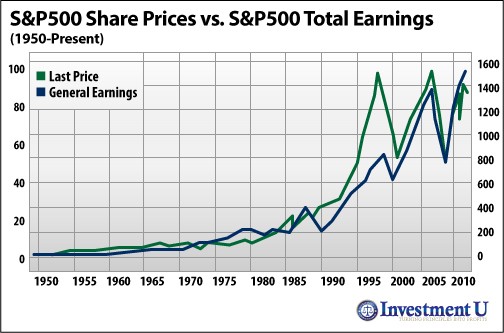The Bubble Investment U
Post on: 3 Май, 2015 No Comment

by Tony DAltorio Thursday, September 30, 2010
Thursday, September 30, 2010
So, is the United States headed towards deflation? While the financial markets have worried about it off and on for many months, of more concern right now is a potential bubble in the U.S. Treasury market.
My colleague, Investment U’s Alexander Green, has noted several times the dangers of buying long-term Treasury bonds .
Yet some investors continue to buy these investments. If they really cared about their money, these investors would take a minute or two to orient themselves to what’s going on now, what has happened before and what is more than likely going to take place soon.
The Great Depression and The Horrors of Deflation
Every bubble in history has been sold with a great story. Like the 18th century, when the promise of riches in Spain’s South American colonies resulted in the South Sea Bubble.
Today, investors don’t have any tales of wealth driving them into treasuries. But they do hear a lot about the Great Depression, Japan in the 1990s and the horrors of deflation.
Along with a good story, bubbles are also perceived as enjoying support from governing authorities, such as the Federal Reserve. The so-called Greenspan Put in the 1990s allegedly put a floor under stock market prices, emboldening speculators, which then led to the dot.com craze.
Today, bond market players believe there is a Bernanke Put. With more quantitative easing coming soon in the form of QE2, an open-ended commitment to buy more U.S. Treasury bonds. speculators think there is a price floor under Treasury prices, making it a no-lose investment.
Supposedly, that will put a floor on Treasury prices, making them the perfect play.
Many people buying them really do think the U.S. is becoming Japan, with lackluster growth and declining price levels ahead of it. They don’t realize that — contrary to common thought — history doesn’t usually portray de-leveraging as the big bad wolf.
Gerry Tang and Christian Upper recently wrote Debt Reduction After Crises. an essay for the Bank for International Settlements, which examined 20 credit booms that ended badly.
In nearly every case, inflation actually greatly reduced debt after the credit booms. Debt was paid back with cheaper currency.
No wonder then that the Federal Reserve wants to stoke some inflation in the United States through quantitative easing. It’s betting the U.S. will follow the trend. instead of Japan.
The Differences Between Japan and the United States
A closer look at Japan shows some of the major differences between it and the United States, differences that the bond bulls are ignoring at their own peril.
The bank of Japan actually acted very conservatively to its own crisis. It maintained high interest rates in the early 1990s in order to squelch any remaining speculation. And it only turned to quantitative easing (i.e. printing money) a decade after deflation really sunk in.
The United States, on the other hand, promptly recapitalized its banking system, while the Federal Reserve pulled out all the monetary stops it could to re-inflate the economy.
The Treasury market bulls can’t or won’t see the real reason why Japan did what it did. Its conservative approach reflected a political imperative to avoid inflation at all costs.
Japan’s populace was aging rapidly. And these Japanese retirees had much of their life savings invested into Japanese government bonds. Japan’s senior citizens were also over-represented in Japan’s legislature. These representatives, therefore, wouldn’t cast a vote for inflation. They had a vested interest in delivering the opposite, or at least price stability, to their constituents.
Additionally, other deflationary forces were at work. The disproportionate numbers of elderly citizens resulted in a continuous weakening of domestic demand. And the rise of neighboring China as a fierce competitor certainly didn’t help Japanese businessesl.
With a younger demographic, the U.S. has little political reason to sink into deflation.
Also, whereas the Japanese credit boom was largely a corporate affair, it is American households that have vast outstanding debts. As Bernanke well knows, such families would benefit from a pickup in inflation.
Don’t Get Caught Fighting The Fed
If the Fed’s inflation efforts fail, bond investors win out with low rates for a long time. But as the old Wall Street saying goes, Don’t fight the Fed.
What the Fed really wants, the Fed will more than likely get. And Ben Bernanke really wants his plan to succeed, as his infamous Helicopter Ben speech from 2002 shows:
Many big investors are playing a game of musical chairs with Treasury funds right now. They want to ride the momentum until the music stops; but if QE2 succeeds, they will lose out.
Everyone will simultaneously rush for the exits and many won’t get out in time.
So don’t get caught fighting the Fed; leave before the music stops and the bubble bursts. You’ll be glad you did.














